Still Life originated in the Netherlands in the 1600s (first flourished there).
Still life was heavily impacted by Dutch colonialism, which saw the transportation of exotic fruit and objects. Displaying these objects in still life became a symbol of wealth and value.
Still life art could be used to document and symbolise historical moments where culture is brought to another country.
What is Vanitas?
Vanitas is a still-life painting genre that uses symbolism to show the transience of life, the futility of pleasure, and the certainty of death. It began in the 16th century and carried on into the 17th century.
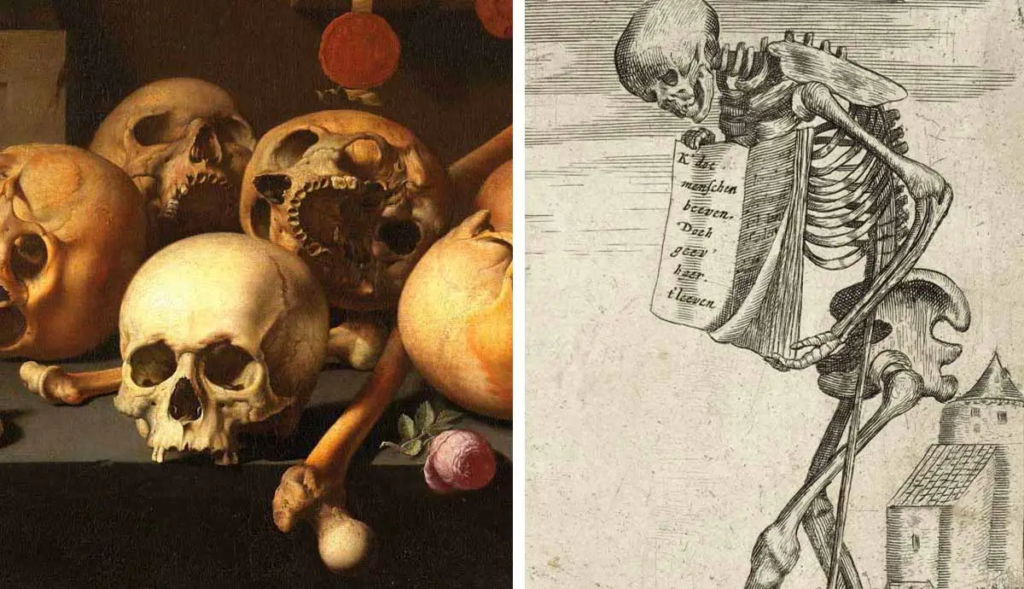
What is Memento Mori?
Memento Mori is an artistic or symbolic trope acting as a reminder of the inevitability of death. As well as that it is a latin phrase meaning ‘remember you must die’. A basic Memento Mori painting would be portrait with a skull, but other symbols commonly found are hour glasses or clocks, extinguished e.g. guttering candles, fruit, and flowers.
What kind of metaphors and symbols are used in still life and why? (Include connections to trade, slavery, colonialism, wealth, status…)
The kind of metaphors and symbols used in still life are
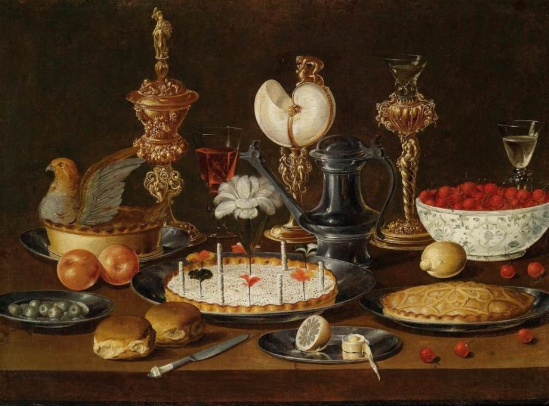
In this painting above the fruit, cheese and other items may represent the transportation of new foreign goods being documented in history. The cheese could be transported from France, the grapes and peach presented harvested in Europe and the wine could also be transported from another side of Europe.
The still life presents humanly and materialistic pleasure such as pairing wine with cheese and grapes, something that Is often paired together in modern day similarly to the paintings layout of items portrayed out.
Laura Letinsky Artist Reference/ Image Analysis:
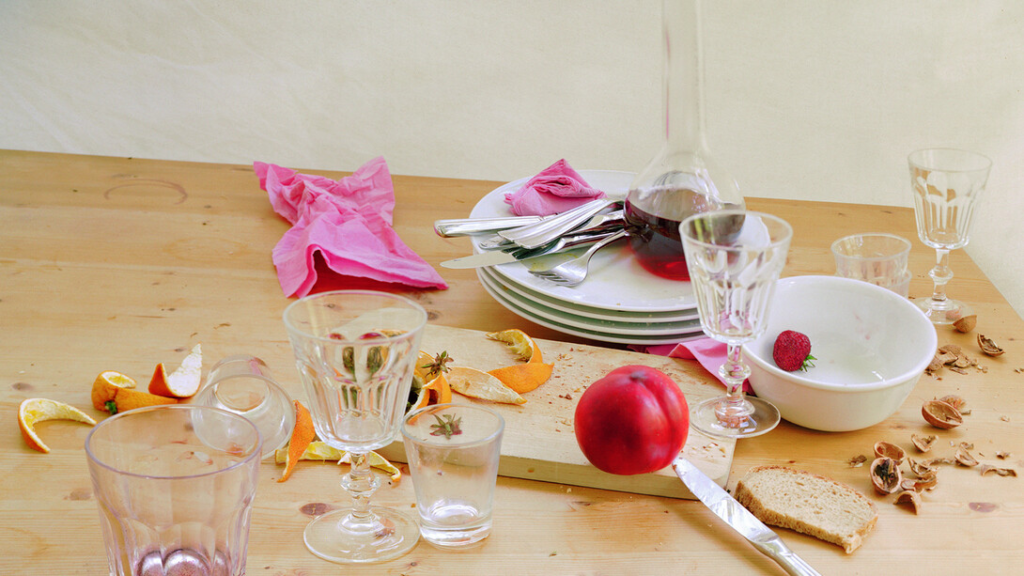
Laura Letinsky (60 years old and currently based in Chicago, Illinois) is an artist and professor ( Department of Visual Arts) in University of Chicago. She has exhibitions around the states. Laura started her photography journey in the 90s through still life and brought her ideas of food and still life considered as “feminine due to it’s affiliation with home and domesticity”.
It is obvious to the audience that this photograph is taken in the 21st century, as the colour, style and articulation of the background and the objects is much more different in comparison to the 20th century stiff life.
Laura Letinsky is driven by the articulation of “accidents, control and contrivance”. She found her inspiration “after breakfast, look to her plates for raw materials and set her camera up in the kitchen”. Laura took food as her main subject and created artistic displays of the free roaming “mess”, instead of the classical 20th century creative object and cuisine display with dark and classic backgrounds.
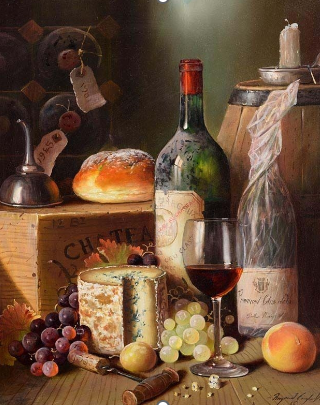
In this painting the fruit, cheese and other items may represent the transportation of new foreign goods being documented in history. The cheese could be transported from France, the grapes and peach presented harvested in Europe and the wine could also be transported from another side of Europe.
The still life presents humanly and materialistic pleasure such as pairing wine with cheese and grapes, something that Is often paired together in modern day similarly to the paintings layout of items portrayed out.
Image Analysis:
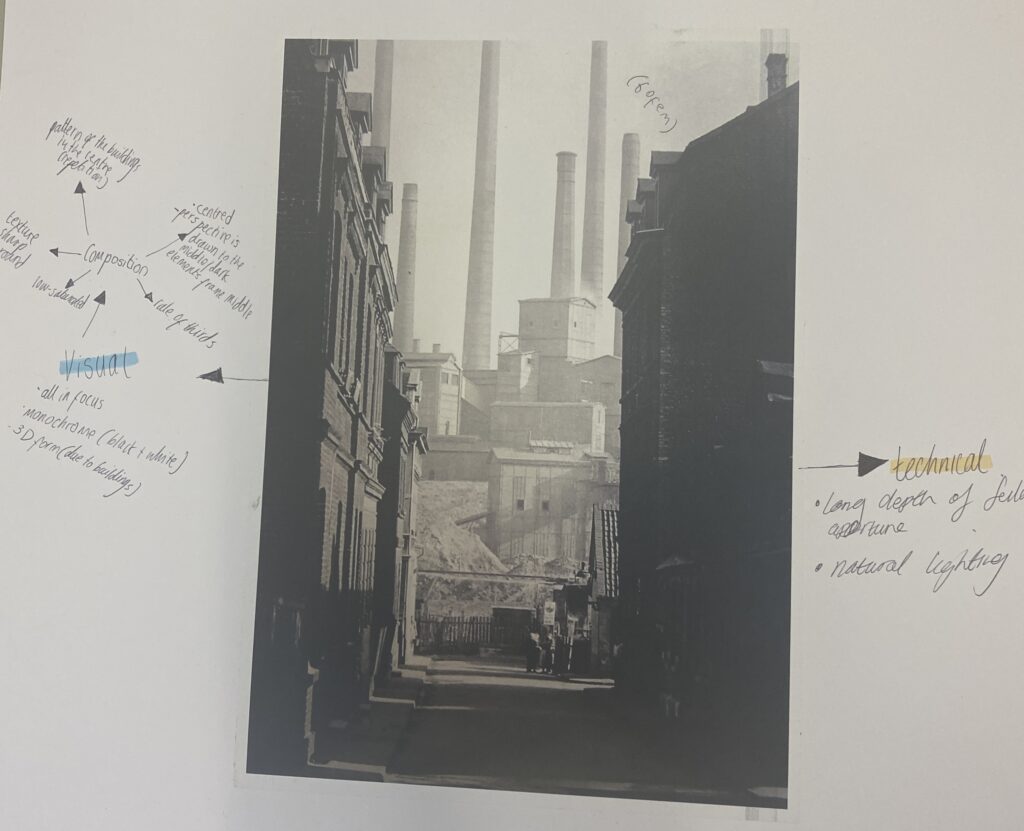
In the first week of starting A-Levels we focused on image analysis and the visual and technical components of the image and it can be influenced by the camera. When looking at the Visual element of the photograph I looked at the composition of the subjects in the photograph, if there is an odd number of subjects to make the photograph appear interesting and unique. When looking at the technical elements we focused on how the manual modes play a part in the shadows, lighting and quality of the photograph through the lens. The image was taken in natural daylight and taken in a position when the depth of field is long so every detail of the image is clear and easy to observe.

Good start Marta.
Try to add a sub title at the top; ‘What is Still Life?’. Then re-word your introduction to give an over view about still life. You can include how Colonialism influenced some early still life art, rather than making it all about colonialism.
The other questions that you should include are listed on the blog: (I have also included below).
Define what still life is
Show examples of still life painting and photography
Include specific artist references and choose one image for analysis
Then Answer:
What is Vanitas?
What is Memento Mori?
What kind of metaphors and symbols are used in still life and why? (Include connections to trade, slavery, colonialism, wealth, status…)